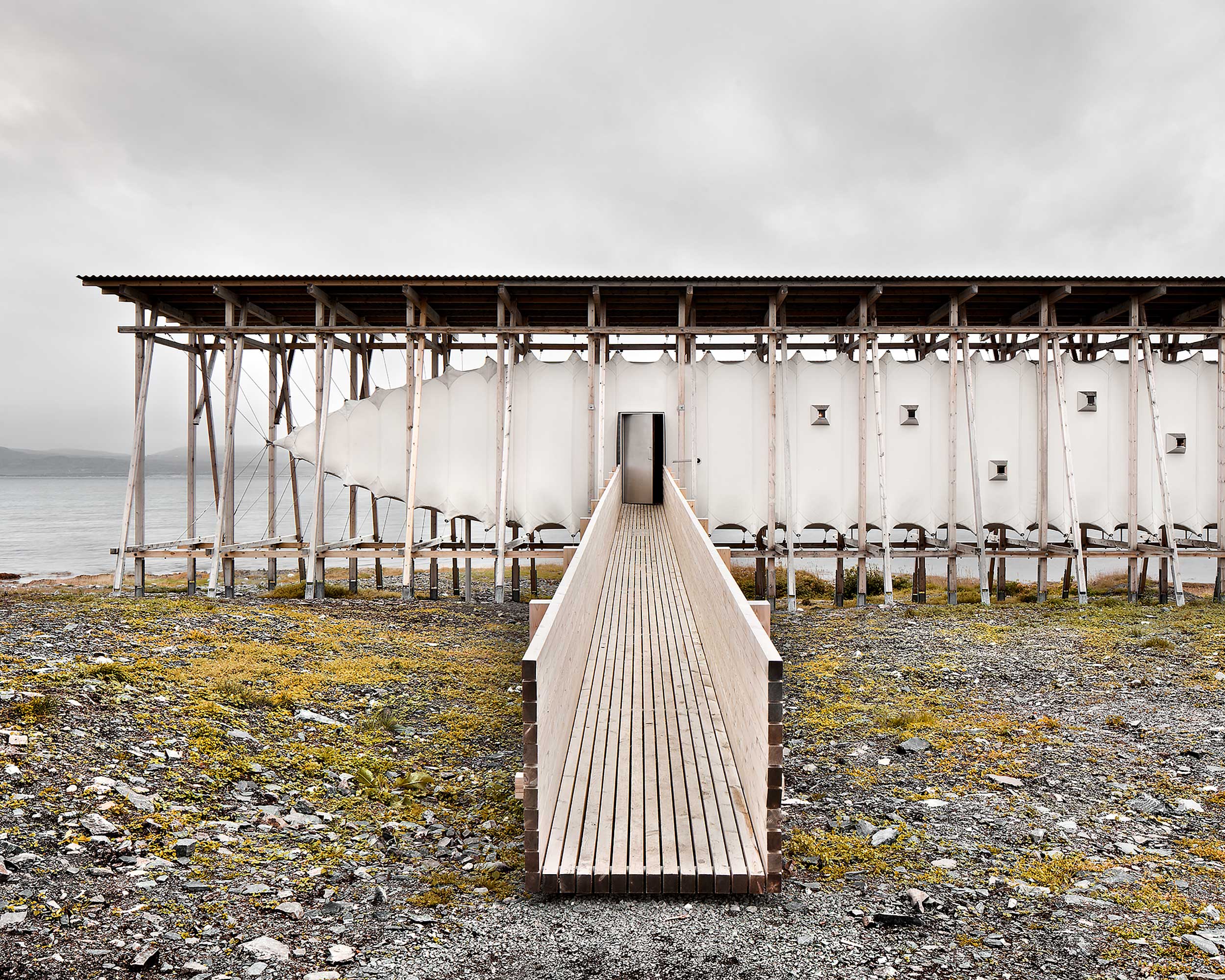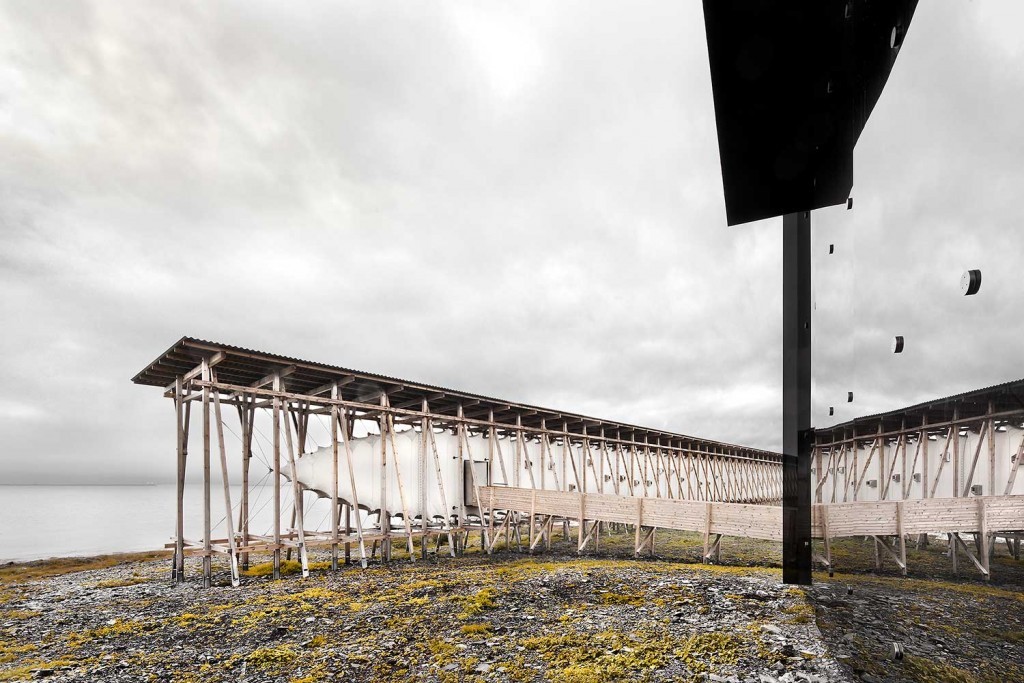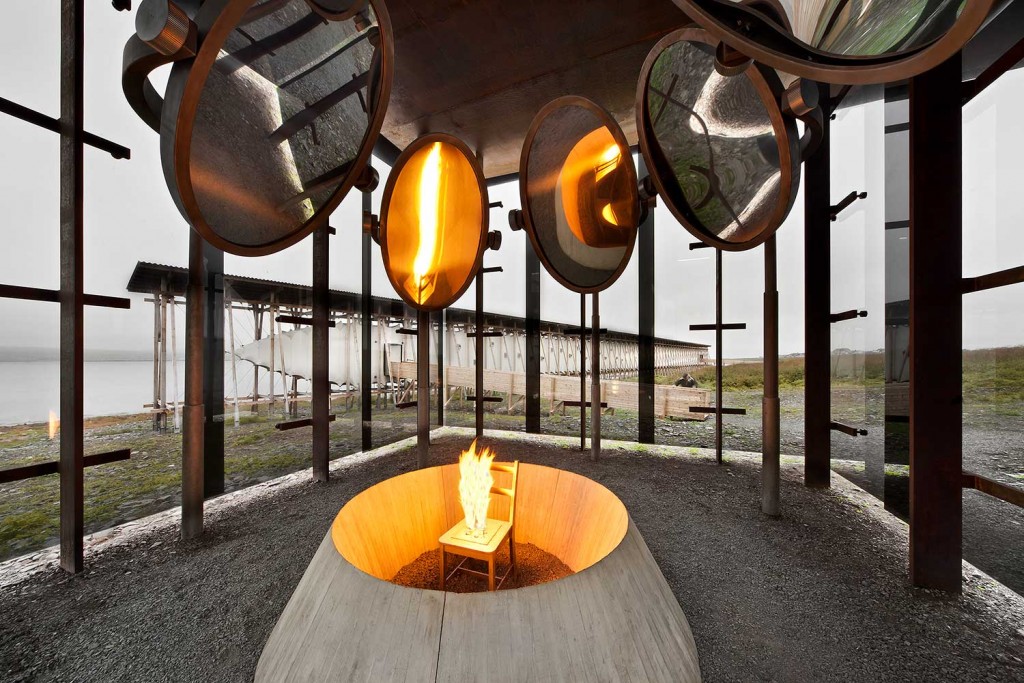Village
A Monument at the Water’s Edge
The Steilneset Memorial, by architect Peter Zumthor and artist Louise Bourgeois, commemorates the women and men who were executed on Vardø Island, Norway.
Text—Juliette Leblanc
Photos—Ken Schluchtmann
December 24, 1617, is a dark date in Norwegian history. While most of the men from the coastal village of Vardø (located in Finnmark County, in the northernmost part of the country) were out fishing, a terrible storm suddenly struck the Barents Sea, causing 10 of the boats to sink and swallowing 40 men in its wake. From one day to the next, the population of the village shifted to a majority of women, who had to learn quickly how to manage on their own.
At the time, the Crown was trying to impose the Protestant religion in the more remote areas of Norway where traditional pagan rituals were still practised. Dignitaries were sent to Vardø and took advantage of the situation to accuse over a hundred women, young girls, and Sámi fishermen of witchcraft. Ninety-one of the accused were burned at the stake.
Some 400 years after this terrible state-led trial, the Norwegian government decided to commemorate the victims with a monument on the very spot where, according to certain historians, the victims were executed.

On a beach overlooking the Barents Sea, Peter Zumthor, Swiss architect and recipient of the Pritzker Prize, and Louise Bourgeois, renowned Franco-American artist, designed and built the Steilneset Memorial.
The monument is also the last major work by Bourgeois, whose death in 2010 came a year before the memorial’s unveiling.
Two buildings make up the memorial. They form, in the words of Peter Zumthor, “a line and a dot.” The structure containing Zumthor’s installation, Memory Hall, is shaped like a long fabric cocoon and held up by a wood frame. Louise Bourgeois’ installation, The Damned, The Possessed, The Beloved, is in the centre of a cube surrounded by frosted glass panels.
Zumthor’s creation illustrates his exceptional mastery of wood.


The frame forms a 125 m long skeleton reminiscent of the drying frames for fish, now fallen into disuse, that are scattered across the island.
Solemn and elegant, the construction resembles a sailboat and houses a narrow wooden passageway, pierced by 91 windows, each of which represents a person who was executed. Though it doesn’t insulate visitors from the elements, the silk-draped corridor — punctuated with banners bearing the names of the victims and excerpts from their trials — is dark, even stifling. A light bulb shines in each window, evoking the Scandinavian winter tradition of lit windows without curtains. But here, Zumthor repurposes the symbol of welcome, warmth, and traditional comfort to remind us of a time when a community turned against its own, with a series of unfounded accusations.


The building containing Bourgeois’ installation contrasts with Zumthor’s. The square structure, made of steel and panels of tinted glass, forms four walls inside of which the artist has placed a metal chair. The chair is reflected in seven oval mirrors placed on metal columns, like judges surrounding someone sentenced to death.

In the seat of the chair, a fire burns continuously. The eternal flame here does not symbolize redemption; it only illuminates its own destructive image.
Zumthor’s and Bourgeois’ approaches both draw upon irreverence and frankness. Their collaborative work tells a story, the tale of the 77 women and 14 men burned at the stake of the collective self-righteousness of the time. Visitors are stopped in their tracks by the emptiness all around — a boundless mirror of water. The monument, placed on the edge of Northern Europe like a wreck waiting to wash ashore, confronts the waves which, in 1617, sealed the fate of the community of Vardø.
Never Miss Another Issue
Two issues per year
25% OFF previous issues
Free Shipping in Canada